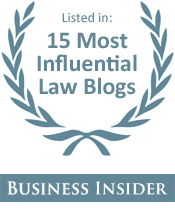Whistleblower Law Blog
SEC Makes Another Whistleblower Payout — This Time at Maximum 30%
The U.S. Securities and Exchange Commission (SEC) announced its second whistleblower award in a month, saying it will give the maximum 30% share of penalties in an unidentified case to a tipster who helped in the enforcement action.
Coming after a huge $14 million award earlier in October, the more modest payout of more than $150,000 suggests that the SEC’s whistleblower office is systematically nailing all of its prescribed metrics: Successive announcements have emphasized payout speed (payment in August on an award made in June); payout size (the $14 million award); and, here, payout percentage.
Under the Dodd-Frank Act of 2010, the SEC’s whistleblower program pays bounties of 10% to 30% to informants who provide significant help in cases that result in the collection of more than $1 million in fines for securities violations.
Whistleblower awards aren’t deducted directly from the penalties; instead they come from a special “Investor Protection Fund” created by the Dodd-Frank law.
The SEC didn’t release many details about the latest award or its recipient, whose anonymity the agency is obliged to protect. In a related order, however, the SEC revealed that it had shut out a second whistleblower in the case. The second person reacted to the SEC’s initial denial by withdrawing the claim — then tried to reinstate it, only to be rebuffed again.
Reinstating a claim that had already been found lacking, the SEC said, “would have needlessly tied up the processes and limited resources of the Commission’s whistleblower program.”
The SEC didn’t explain how the new award amount — “more than $150,000” — jibed with its announced percentage: A 30% bounty on the threshold amount of $1 million in penalties would be $300,000.
Unlike the SEC’s press release, however, the underlying order didn’t state a dollar amount: It simply awarded the whistleblower 30% of monetary sanctions collected “or to be collected,” which may account for the difference.
So far the agency has been careful not to disclose a combination of information (such as award amount and percentage) that could identify the underlying enforcement action — and therefore, possibly, the whistleblower’s identity.
Tagged: Dodd-Frank Act, Enforcement Bodies, Fraud Types, Securities and Exchange Commission (SEC), Securities Fraud, Whistleblower Laws (Federal)



